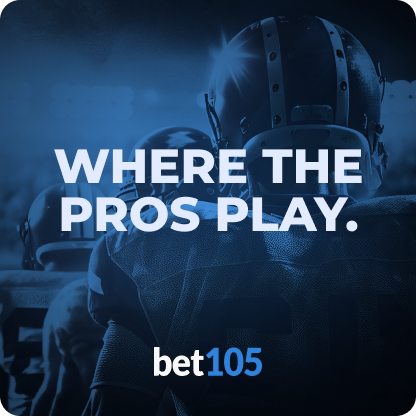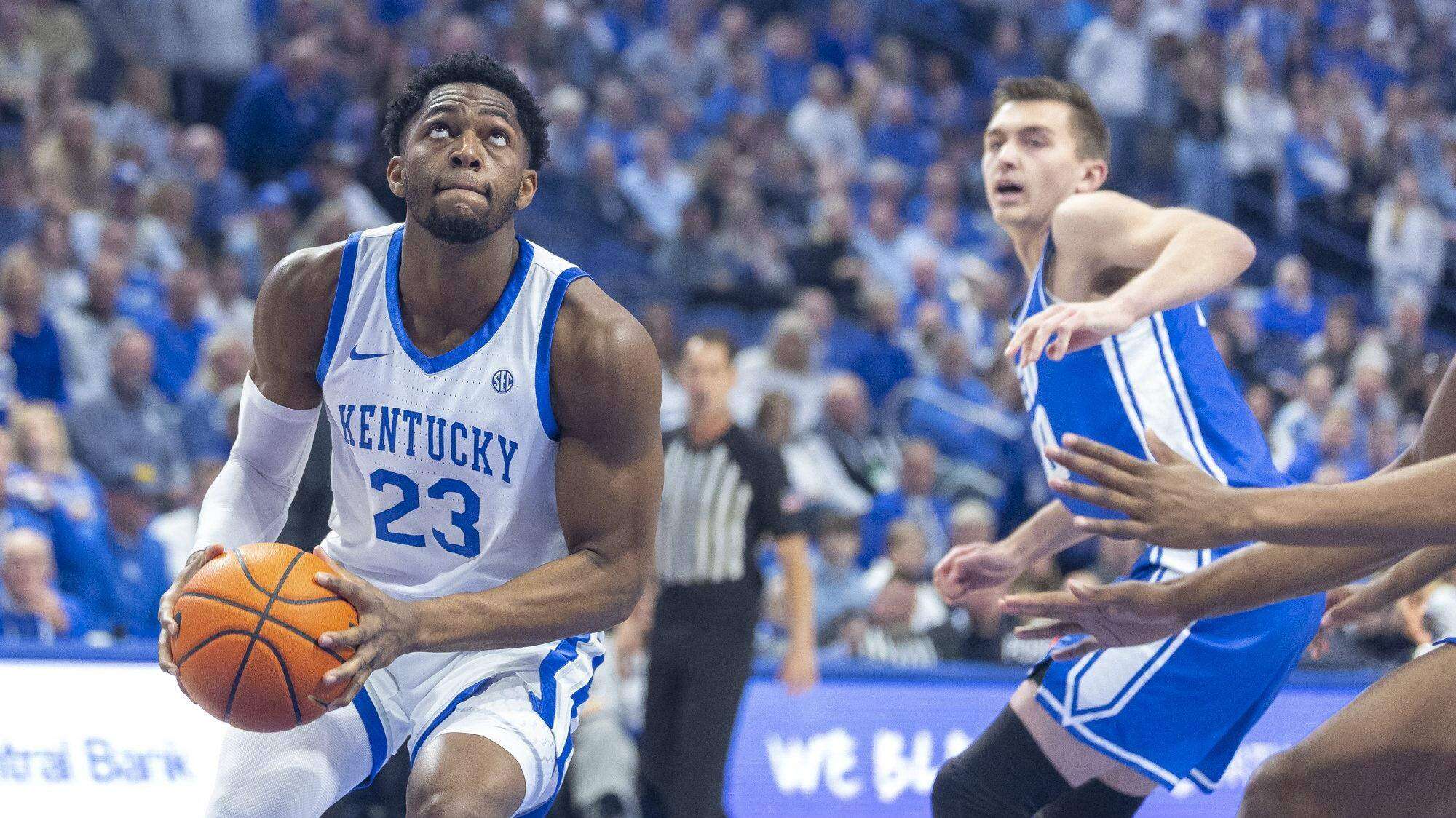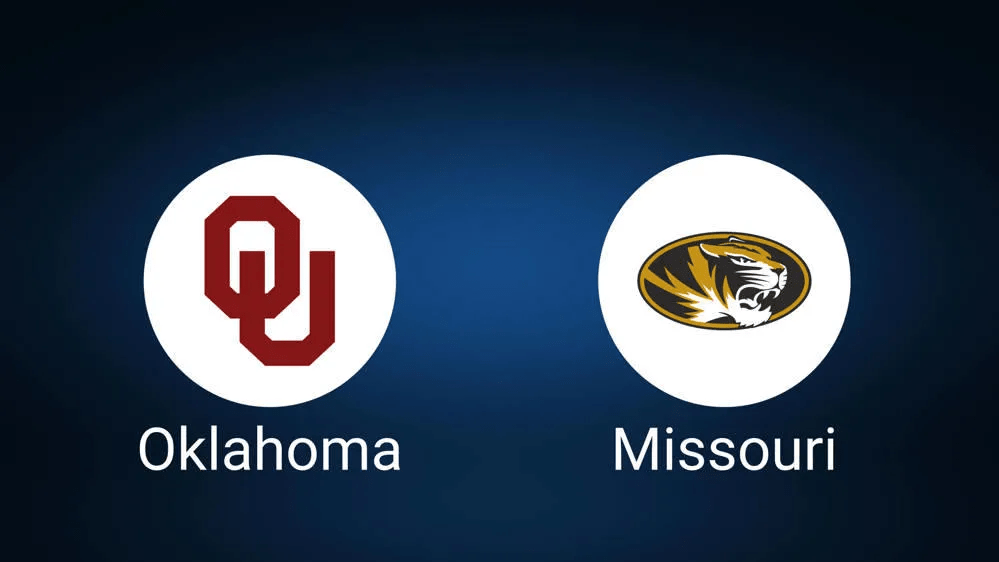North Dakota Fighting Hawks vs. Hawai‘i Rainbow Warriors Advanced Game Analysis
North Dakota Fighting Hawks vs Hawai‘i Rainbow Warriors Advanced Game Analysis – NCAA Basketball Nov.28, 2025 at 11:59pm ET

North Dakota Fighting Hawks vs Hawai‘i Rainbow Warriors Advanced Game Analysis – NCAA Basketball Nov.28, 2025 at 11:59pm ET
Matchup Preview Table
| Team | Record | Points / Game | Opp Points / Game | Avg Score Margin | Eff FG% | 3P% | FT% | Assists / Game | A / T Ratio | Total Rebounds / Game | Turnovers / Game |
|---|---|---|---|---|---|---|---|---|---|---|---|
| North Dakota Fighting Hawks | 3 5 | 69.9 (#254) | 78.7 (#229) | -8.9 (#256) | 46.3% (#297) | 28.8% (#297) | 62.9% (#343) | 10.9 (#304) | 1.086 (#184) | 31.3 (#310) | 10.0 (#42) |
| Hawai‘i Rainbow Warriors | 5 2 | 79.5 (#107) | 65.2 (#27) | +14.3 (#53) | 50.9% (#171) | 30.9% (#251) | 73.2% (#136) | 12.8 (#200) | 0.865 (#263) | 40.5 (#45) | 14.8 (#302) |
Quick Glance Summary Card
Game Snapshot
===========================================
Form and Margin
- North Dakota: 3 5, 69.9 PPG (#254), -8.9 margin (#256)
- Hawai‘i: 5 2, 79.5 PPG (#107), +14.3 margin (#53)
Offensive Level
North Dakota █████░░░░░░ 69.9 PPG, 46.3% eFG
Hawai‘i ███████░░░░ 79.5 PPG, 50.9% eFG
Defensive Scoring
North Dakota █░░░░░░░░░░ 78.7 Opp PPG (#229)
Hawai‘i ██████████░ 65.2 Opp PPG (#27)
Rebounding
North Dakota ██░░░░░░░░░ 31.3 RPG (#310)
Hawai‘i ████████░░░ 40.5 RPG (#45)
Creation and Turnovers
North Dakota 10.9 AST (#304), 1.086 A/T (#184),
10.0 TO (#42)
Hawai‘i 12.8 AST (#200), 0.865 A/T (#263),
14.8 TO (#302)
Headline:
Hawai‘i combines a top tier scoring margin, strong defense
and high free throw volume against a North Dakota team that
struggles on the glass, at the line and in shot efficiency,
but generates steals and takes care of the ball well.
Team Identity Profiles
North Dakota Fighting Hawks Team Profile
North Dakota comes in at 3 5 with a statistical profile that reflects their negative results. The Fighting Hawks average 69.9 points per game (#254) while allowing 78.7 (#229), resulting in a minus 8.9 scoring margin (#256). Offensively, they sit at 46.3 percent effective field goal percentage (#297) and 41.1 percent overall from the field (#277), with a 0.975 shooting efficiency index (#323). Those numbers place the offense clearly below the national middle in terms of shot quality and conversion.
Creation indicators are modest. North Dakota posts 10.9 assists per game (#304), with only a 0.429 assists per field goal made ratio (#332). The ball does not move freely, and a high proportion of scoring comes from individual actions rather than assisted looks. The assist to turnover ratio of 1.086 (#184) is respectable because they limit mistakes. Turnovers are a bright spot at just 10.0 per game (#42) and 12.3 percent turnovers per play (#45). Even when shots are not falling, North Dakota usually completes possessions with attempts instead of giveaways.
The shooting breakdown explains a lot of the offensive ceiling. The Fighting Hawks hit just 28.8 percent from three (#297) on 22.3 attempts per game (#218), making 6.4 threes per game (#274). That combination of low accuracy and modest volume reduces their spacing and forces them into more contested twos. Inside the arc they shoot 48.0 percent (#269), which is below average. At the line they produce a 0.332 free throw attempt rate (#245) with 20.4 attempts (#219) and 12.9 makes (#276), but they convert only 62.9 percent (#343). Even when they draw fouls, they do not cash in efficiently.
Defensively, North Dakota has struggled. Opponents average 78.7 points per game and post 56.4 percent effective field goal percentage (#315) along with 49.2 percent overall shooting (#319). Opponent three point percentage is 33.1 (#187) on 24.1 attempts (#212), so the arc is not the main issue. The real trouble is inside, where opponents shoot 61.5 percent on twos (#349), one of the weakest marks nationally. Opponent shooting efficiency stands at 1.177 (#306). The combination of interior breakdowns and poor rebounding amplifies every defensive mistake.
On the glass, North Dakota is heavily underwater. They average 31.3 rebounds per game (#310), with 7.9 offensive boards (#277) and 20.0 defensive boards (#292). Their offensive rebounding rate is 22.0 percent (#327) and defensive rebound rate is 69.7 percent (#218). Opponents collect 41.1 boards per game (#335), including 8.7 offensive rebounds (#144) and 27.9 defensive rebounds (#351). Opponent offensive rebounding rate sits at 30.3 percent (#218), while opponent defensive rebound rate is a dominant 78.0 percent (#327). In short, North Dakota rarely generates second chances and frequently gives them up.
The one clear strength for the Fighting Hawks is backcourt disruption. They grab 9.6 steals per game (#24) with an 11.6 percent steals per play rate (#24) and force 15.6 opponent turnovers per game (#35) at 18.9 percent opponent turnovers per play (#35). They are among the best in the country at creating steals and live ball turnovers. That activity is key to keeping them in games despite defensive efficiency and rebounding problems. On the foul side, they commit 20.1 personal fouls per game (#278) and 24.4 percent fouls per play (#270), while opponents commit 17.9 fouls per game (#221). They tend to put opponents at the line more often than they get there themselves, and their own poor FT% means that free throw exchanges often favor the other side.
Hawai‘i Rainbow Warriors Team Profile
Hawai‘i profiles as a much more complete team. The Rainbow Warriors are 5 2 and average 79.5 points per game (#107) while allowing only 65.2 (#27). That yields a strong plus 14.3 scoring margin (#53). On offense they post 50.9 percent effective field goal percentage (#171) and 45.3 percent overall shooting (#142), with a 1.144 shooting efficiency index (#103). They score efficiently without relying on extreme pace or shot volume.
Playmaking sits in the middle tier. Hawai‘i records 12.8 assists per game (#200) on a 0.500 assists per field goal made ratio (#223). The assist to turnover ratio is 0.865 (#263), dragged down by 14.8 turnovers per game (#302) and a 17.6 percent turnover per play rate (#282). They create enough good chances, but they give away too many possessions compared with elite teams. That is the main offensive flaw in an otherwise strong profile.
The shooting breakdown shows balance and efficiency. From three, Hawai‘i hits 30.9 percent (#251) on 20.5 attempts (#273), making 6.3 threes per game (#279). The perimeter efficiency is below average but not disastrous. Inside the arc they shoot 53.5 percent on twos (#131), which is strong. Combined with 45.3 percent overall shooting (#142) and a 1.144 efficiency index, the interior and midrange game looks healthy. At the line, they are both prolific and effective. Hawai‘i carries a 0.526 free throw attempt rate (#7), 29.8 attempts per game (#11) and 21.8 makes (#13) at 73.2 percent (#136). Free throws are a central weapon, giving them a high floor even on nights when jump shots are not falling.
Defensively, Hawai‘i is one of the better units in the country by the numbers. Opponents score only 65.2 points per game (#27) and shoot 43.2 percent effective field goal percentage (#19) and 38.7 percent overall (#31). Opponent three point percentage is held to 29.8 (#81) on 17.3 attempts (#10), while opponent two point percentage is just 42.5 (#15). Opponent shooting efficiency sits at 0.931 (#9). The Warriors contest both the arc and the paint effectively and do not rely solely on turnover creation to get stops.
On the glass, Hawai‘i is very solid. They average 40.5 rebounds per game (#45), with 9.8 offensive boards (#137) and 26.3 defensive rebounds (#45). Their offensive rebounding rate is 33.0 percent (#89) and defensive rebound rate is 76.0 percent (#59). Opponents collect 30.2 boards per game (#24) with 8.3 offensive rebounds (#109) and 20.0 defensive boards (#53). Opponent offensive rebounding rate is only 24.0 percent (#59), while opponent defensive rebound rate is 67.0 percent (#89). Hawai‘i is winning the rebounding battle on both ends and turning that into control of possession volume.
In disruption metrics, Hawai‘i is more conservative. They produce 6.7 steals per game (#195) with an 8.0 percent steals per play rate (#201) and force 12.8 opponent turnovers per game (#152) at 15.5 percent opponent turnovers per play (#172). They rely more on strong positional defense and shot suppression than on gambling for steals. Foul wise, they commit 19.2 personal fouls per game (#216) and 23.1 percent fouls per play (#213), but opponents commit 22.7 fouls per game (#12) and 26.9 percent fouls per play (#19). That whistle profile pairs with the high offensive free throw rate to create a persistent advantage at the line.
Team Identity Snapshot Lists
North Dakota Identity Snapshot
- 3 5 record with 69.9 PPG (#254) and 78.7 opponent PPG (#229), minus 8.9 margin (#256)
- 46.3 percent effective field goal (#297), 41.1 percent FG (#277), 0.975 shooting efficiency (#323)
- 28.8 percent from three (#297) on 22.3 attempts (#218), 6.4 makes (#274)
- 62.9 percent FT (#343) on 20.4 FTA (#219) and 12.9 FTM (#276)
- Poor rebounding at 31.3 RPG (#310) with 22.0 percent offensive rebound rate (#327) and 69.7 percent defensive rebound rate (#218)
- High level disruption with 9.6 steals (#24) and 15.6 opponent turnovers (#35)
- Severe interior defensive issues, allowing 61.5 percent opponent twos (#349) and 1.177 opponent shooting efficiency (#306)
Hawai‘i Identity Snapshot
- 5 2 record with 79.5 PPG (#107) and 65.2 opponent PPG (#27), plus 14.3 margin (#53)
- 50.9 percent effective field goal (#171), 45.3 percent FG (#142), 1.144 shooting efficiency (#103)
- 30.9 percent from three (#251) on 20.5 attempts (#273), 6.3 makes (#279)
- Strong free throw profile, 73.2 percent FT (#136) with 29.8 FTA (#11) and 21.8 FTM (#13)
- 40.5 rebounds per game (#45) with 33.0 percent offensive rebound rate (#89) and 76.0 percent defensive rebound rate (#59)
- Top tier defense, allowing 43.2 percent opponent effective field goal (#19) and 0.931 opponent shooting efficiency (#9)
- More conservative in steals but benefits from a whistle that sends opponents to the line less often and draws many fouls on offense
High Level Matchup Context
At a high level, this game matches a team with a negative scoring margin and structural weaknesses inside against a team with a high scoring margin, strong rebounding and efficient defense. North Dakota’s path relies on their ability to create chaos with steals and limit turnovers, turning the game into a scramble where possession swings can offset efficiency gaps. Hawai‘i prefers a more controlled game where their interior scoring, defensive discipline and free throw advantage can accumulate over time. The question is whether North Dakota’s pressure can destabilize Hawai‘i enough to overcome significant edges in shooting efficiency and rebounding.
If Hawai‘i maintains composure against North Dakota’s aggressive hands and keeps turnovers at or below their season average, their advantages in interior scoring, rebounding and free throws will likely be decisive. If the Fighting Hawks can spike Hawai‘i’s turnover rate and convert live ball steals into transition points, they can narrow or even erase the efficiency gap for stretches. The statistical baseline, however, leans heavily toward the Rainbow Warriors.
By The Numbers: Core Matchup Metrics
Scoring and Margin
Points Per Game North Dakota █████░░░░░░ 69.9 (#254) Hawai‘i ███████░░░░ 79.5 (#107) Opponent Points Per Game North Dakota █░░░░░░░░░░ 78.7 (#229) Hawai‘i ██████████░ 65.2 (#27) Average Scoring Margin North Dakota ██░░░░░░░░░ -8.9 (#256) Hawai‘i █████████░░ +14.3 (#53)
Hawai‘i scores nearly 10 points more per game than North Dakota while allowing more than 13 fewer. The resulting swing in scoring margin is over 23 points between the teams. That is one of the clearest indicators of the underlying gap. North Dakota’s negative margin is driven by both inefficient offense and porous defense, while Hawai‘i’s positive margin reflects balanced play on both sides of the ball.
Shooting Efficiency
Effective Field Goal Percentage North Dakota ████░░░░░░░ 46.3% (#297) Hawai‘i ██████░░░░░ 50.9% (#171) Three Point Percentage North Dakota ███░░░░░░░░ 28.8% (#297) Hawai‘i ████░░░░░░░ 30.9% (#251) Two Point Percentage North Dakota █████░░░░░░ 48.0% (#269) Hawai‘i ██████░░░░░ 53.5% (#131) Shooting Efficiency Index North Dakota 0.975 (#323) Hawai‘i 1.144 (#103)
The shooting gap is consistent from every angle. North Dakota trails significantly in effective field goal percentage, two point percentage and overall efficiency. Their three point figure under 29 percent is particularly limiting in modern spacing. Hawai‘i is not elite from deep but is clearly stronger inside and overall, with a top 110 efficiency mark. When combined with rebounding and free throws, this advantage in shot conversion becomes central to the matchup.
Rebounding
Total Rebounds Per Game North Dakota ██░░░░░░░░░ 31.3 (#310) Hawai‘i ████████░░░ 40.5 (#45) Rebounding Gap vs Opponents North Dakota 31.3 vs 41.1 (deficit of 9.8) Hawai‘i 40.5 vs 30.2 (edge of 10.3) Offensive Rebounds and Rates North Dakota 7.9 ORB (#277), 22.0% ORB% (#327) Hawai‘i 9.8 ORB (#137), 33.0% ORB% (#89) Defensive Rebound Percentage North Dakota 69.7% DRB% (#218) Hawai‘i 76.0% DRB% (#59)
Possession control on the glass strongly favors Hawai‘i. North Dakota is losing almost 10 rebounds per game compared to their opponents, while Hawai‘i is gaining about 10. North Dakota’s offensive rebounding rate near 22 percent is one of the weaker marks nationally and their defensive board work is below average. Hawai‘i’s combination of a top tier defensive rebounding rate and strong offensive rebounding rate suggests that they are likely to secure more shots on offense and deny second chances on defense.
Ball Security and Pressure
Assists and Turnovers - Offense
North Dakota 10.9 AST (#304)
10.0 TO (#42)
1.086 A/T (#184)
Hawai‘i 12.8 AST (#200)
14.8 TO (#302)
0.865 A/T (#263)
Turnovers Forced - Defense
North Dakota 15.6 Opp TO (#35)
18.9% Opp TO/play (#35)
9.6 steals (#24)
Hawai‘i 12.8 Opp TO (#152)
15.5% Opp TO/play (#172)
6.7 steals (#195)
Here the picture flips. North Dakota has the more secure offense and the more disruptive defense. The Fighting Hawks turn it over only 10.0 times per game and force 15.6, creating a net turnover advantage most nights. Their 9.6 steals per game and 11.6 percent steals per play rate are high level. Hawai‘i’s 14.8 turnovers per game opens a clear door for North Dakota to create extra possessions. This is the main axis where the underdog has a statistical edge.
Fouls and Free Throws
Free Throw Rate (FTA per FGA)
North Dakota 0.332 (#245), 20.4 FTA (#219),
12.9 FTM (#276)
Hawai‘i 0.526 (#7), 29.8 FTA (#11),
21.8 FTM (#13)
Free Throw Percentage
North Dakota 62.9% (#343)
Hawai‘i 73.2% (#136)
Opponent Free Throw Profile
North Dakota 0.436 Opp FTA/FGA (#288),
24.3 Opp FTA (#264)
Hawai‘i 0.416 Opp FTA/FGA (#267),
23.8 Opp FTA (#251)
Free throws are a decisive advantage for Hawai‘i. The Rainbow Warriors generate one of the highest free throw attempt rates in the nation and convert at a solid 73.2 percent. North Dakota, by contrast, is one of the least efficient free throw shooting teams at 62.9 percent and draws fewer attempts. On the other side of the ball, both teams allow fairly high opponent free throw rates, but Hawai‘i’s offensive free throw generation and defensive rebounding help them benefit more often from whistle heavy games.
Advanced Metrics and Tempo Analysis
Field goal attempts give a basic sense of pace. North Dakota takes 61.6 shots per game (#102) while opponents attempt 55.7 (#79). Hawai‘i attempts 56.7 shots (#257) while opponents take 57.3 (#134). North Dakota games lean slightly towards a higher attempts profile for the Hawks, reflecting their turnover creation and faster sequences off steals. Hawai‘i’s games sit closer to neutral in attempts. The Warriors do not need high tempo to gain separation because their efficiency and rebounding advantages show up in standard possession counts.
Effective field goal differentials and scoring margin provide a strong efficiency snapshot. North Dakota sits at 46.3 percent eFG on offense and 56.4 percent allowed on defense. Hawai‘i sits at 50.9 percent eFG on offense and 43.2 percent allowed on defense. The combined swing in shooting efficiency is over 17 percentage points in Hawai‘i’s favor. That aligns with their plus 14.3 scoring margin. Even when accounting for North Dakota’s turnover pressure, the cumulative effect of those efficiency differentials is large.
Shot Profile and Matchup Fit
North Dakota Offense - 28.8% from three (#297) on 22.3 attempts (#218), 6.4 makes (#274) - 48.0% on twos (#269) - 62.9% FT (#343) with 20.4 FTA (#219) - 46.3% effective field goal (#297) Hawai‘i Defense - 29.8% opponent threes (#81) on 17.3 attempts (#10) - 42.5% opponent twos (#15) - 43.2% opponent effective field goal (#19) - 0.416 opponent FTA/FGA (#267) Hawai‘i Offense - 30.9% from three (#251) on 20.5 attempts (#273), 6.3 makes (#279) - 53.5% on twos (#131) - 73.2% FT (#136) with 29.8 FTA (#11) - 50.9% effective field goal (#171) North Dakota Defense - 33.1% opponent threes (#187) on 24.1 attempts (#212) - 61.5% opponent twos (#349) - 56.4% opponent effective field goal (#315) - 0.436 opponent FTA/FGA (#288)
The shot profile matchup is heavily tilted toward Hawai‘i. North Dakota’s offense leans on twos more than threes but is inefficient both inside and outside. That offense now faces a defense that holds teams below 31 percent from three and just over 42 percent on twos. Hawai‘i’s discipline at the rim and on the perimeter makes it difficult for North Dakota to outperform their already modest shooting baseline.
On the other end, Hawai‘i’s interior attack and free throw generation directly target North Dakota’s biggest problems. The Fighting Hawks allow opponents to shoot over 61 percent on twos and post a high free throw attempt rate. Hawai‘i, with 53.5 percent two point shooting and a top 10 free throw attempt rate, is built to exploit that. Even though their three point shooting is only slightly better than North Dakota’s, they do not need to dominate from deep when the interior and free throw advantages are this clear.
Offense vs Defense Matchup Breakdown
North Dakota Offense vs Hawai‘i Defense
North Dakota’s challenge on offense is straightforward. Their 46.3 percent effective field goal percentage and 28.8 percent three point shooting face a defense that ranks inside the top 20 in opponent effective field goal percentage and holds teams under 30 percent from deep. Hawai‘i does not concede many open looks, and their combination of length and positional discipline at the arc means North Dakota’s already shaky perimeter shooting is unlikely to find an easy rhythm.
Inside the arc, the matchup is equally tough. North Dakota’s 48.0 percent two point shooting must deal with a defense allowing only 42.5 percent on twos. Drives and post ups are likely to be met with strong contests and help rotations. Without a strong offensive rebounding profile, North Dakota will not often get second tries at those contested looks. The free throw line is not a reliable escape because the Fighting Hawks shoot under 63 percent there even when they get opportunities.
Hawai‘i Offense vs North Dakota Defense
On this side of the ball, Hawai‘i finds a favorable landscape. Their 53.5 percent two point shooting attacks a defense allowing 61.5 percent inside. That points to efficient paint scoring through ball screens, post touches and drives. The Warriors do not need to rely heavily on three point shooting to score well in this game. The interior advantage is pronounced.
Free throws further extend that edge. Hawai‘i’s 0.526 free throw attempt rate and top 15 national ranks in attempts and makes pair with North Dakota’s 0.436 opponent free throw attempt rate and high foul counts. Even if Hawai‘i’s three point shooting sits near their average, the combination of strong two point efficiency and high volume, solid free throw shooting will steadily push their offensive numbers above the Fighting Hawks.
Offensive Edge
Offensive Edge Meter North Dakota ████░░░░░░░ - 69.9 PPG (#254) - 46.3% eFG (#297) - 28.8% from three (#297) - 62.9% FT (#343) - 10.9 AST (#304), 1.086 A/T (#184) Hawai‘i ████████░░░ - 79.5 PPG (#107) - 50.9% eFG (#171) - 30.9% from three (#251) - 73.2% FT (#136) - 12.8 AST (#200), 0.865 A/T (#263) Net Offensive Edge: Hawai‘i holds a clear offensive edge through higher scoring, better two point efficiency and a major advantage at the line. North Dakota’s low turnovers help, but they do not fully offset the efficiency gap.
Defensive Edge
Defensive Edge Meter North Dakota ██░░░░░░░░░ - 78.7 Opp PPG (#229) - 56.4% Opp eFG (#315) - 33.1% Opp 3P (#187) - 61.5% Opp 2P (#349) - 0.436 Opp FTA/FGA (#288) - 9.6 steals (#24), 15.6 Opp TO (#35) Hawai‘i █████████░░ - 65.2 Opp PPG (#27) - 43.2% Opp eFG (#19) - 29.8% Opp 3P (#81) - 42.5% Opp 2P (#15) - 0.416 Opp FTA/FGA (#267) - 6.7 steals (#195), 12.8 Opp TO (#152) Net Defensive Edge: Strong advantage to Hawai‘i in shot suppression and scoring prevention, with North Dakota’s only defensive edge coming from high steals and forced turnovers.
Style Matchup and Tempo Projection
Stylistically, Hawai‘i is comfortable in a controlled half court game where their size, rebounding and interior scoring can dictate terms. North Dakota would prefer to increase the number of possessions that start with live ball steals and transition chances. Their 9.6 steals per game and top 25 steals per play rate support a style that pressures ball handlers and jumps passing lanes.
However, Hawai‘i does not need a low turnover game to win, only a manageable one. Even if they commit a few more turnovers than average against North Dakota’s pressure, their advantages on the glass and at the line should still push them ahead. If Hawai‘i keeps turnovers closer to 13 rather than 17 or 18, the cumulative impact of scoring efficiency and rebounding is likely to show up on the scoreboard. The more this game resembles a structured half court contest, the more the matchup leans toward the Rainbow Warriors.
Key Players and Unit Impact
North Dakota Fighting Hawks
For North Dakota, the backcourt unit is at the center of their game plan. Their ability to generate 9.6 steals per game while committing only 10.0 turnovers is the primary lever the Fighting Hawks can pull to disrupt Hawai‘i. Guards must apply pressure without constantly fouling, using active hands and anticipation to turn passes into runouts. The efficiency gap in the half court means these transition opportunities are essential to producing enough points to compete.
On offense, ball handlers have to manage the balance between attacking and protecting the ball. With only 10.9 assists per game and a low assist to field goal made ratio, North Dakota often relies on individual creation. Against a compact and disciplined Hawai‘i defense, that can become a problem if possessions stagnate. The more they can use their penetration to kick out for cleaner three point looks, the better chance they have to lift a sub 29 percent three point baseline into a more competitive zone for one night.
In the frontcourt, North Dakota’s bigs face a tough assignment on the glass. They will need to play above their season level to avoid a significant rebounding deficit. Box outs, gang rebounding from guards and an emphasis on limiting second chance points for Hawai‘i can keep the game from tilting early. Offensively, bigs must convert at a higher clip than the current 48.0 percent two point figure and find ways to draw fouls so that Hawai‘i’s interior defense cannot stay comfortable contesting without consequence.
Hawai‘i Rainbow Warriors
For Hawai‘i, the interior scoring and rebounding unit is positioned to drive this matchup. With 53.5 percent two point shooting and 40.5 total rebounds per game, frontcourt players can exploit North Dakota’s 61.5 percent opponent two point defense and weak rebounding. The Warriors are set up to control the paint at both ends, turning misses into putbacks and forcing North Dakota into contested shots at the rim.
The guards and wings carry responsibility for game control. While Hawai‘i’s turnover rate is higher than ideal, their job here is to manage North Dakota’s pressure by staying strong with the ball, making simple passes and not overcomplicating entry actions. They also need to leverage the free throw advantage by attacking close outs and driving into contact rather than settling for low percentage jumpers. Even with only average three point shooting, the combination of rim pressure and free throws can generate efficient scoring outcomes.
Defensively, perimeter players must keep North Dakota’s shooters from finding a rare hot night. With the Fighting Hawks shooting under 30 percent from three on the season, disciplined closeouts and consistent contesting can maintain that weakness. The backcourt also helps control defensive rebounding by crashing when shots go up and preventing North Dakota from exceeding their usual offensive rebounding rate.
Coaching Impact
North Dakota’s staff faces a clear structural puzzle. The current scheme produces high steal rates but gives up extremely efficient interior scoring and a large rebounding deficit. Against Hawai‘i’s interior heavy and free throw centered offense, that combination is risky. The staff may consider shrinking the floor in the half court, sending more help into the paint and selectively dialing back gambling on the perimeter to protect the rim more aggressively. On offense, they need to design sets that create movement and off ball screening to free shooters, rather than leaning solely on isolation and late shot clock drives against a sound defense.
Hawai‘i’s staff operates from a position of strength. Their existing style already targets North Dakota’s weaknesses. The main emphasis is likely on ball security and handling North Dakota’s pressure. Coaches can stress simple reads, the value of two hand catches and the importance of using ball screens and outlets to punish overplays. They will also want to maintain their strong defensive rebounding habits, since controlling the glass neutralizes one of the few ways an underdog can manufacture extra scoring chances.
Timeout management and lineup decisions could come into play if North Dakota strings together steals and quick scores. Hawai‘i’s staff should be ready with calming half court sets that get high percentage twos or trips to the line, rather than quick, risky shots that might fuel North Dakota’s transition. For North Dakota, timely timeouts after runs and willingness to adjust defensive tactics within the game are critical to staying within reach.
Risk Matrix and Scenario Tree
Scenario 1: Hawai‘i Controls the Paint and Glass - Hawai‘i scores efficiently inside with 53.5% two point shooting against North Dakota’s 61.5% opponent two point defense. - Rainbow Warriors win the rebounding battle by a margin similar to their season edge. - Turnovers are kept near Hawai‘i’s current average. - Likely Outcome: Hawai‘i wins comfortably with a margin in the high single digits or low double digits. Scenario 2: North Dakota’s Pressure Warps the Game - North Dakota pushes Hawai‘i’s turnovers well above their 14.8 per game baseline. - Fighting Hawks convert steals into transition points and keep Hawai‘i’s half court offense from fully settling. - Hawai‘i still wins the glass but gives back part of the advantage in wasted possessions. - Likely Outcome: Competitive game where Hawai‘i is still favored but margins shrink to within a few possessions. Scenario 3: Shooting Variance and Free Throw Swings - North Dakota hits significantly above their 28.8% three point average, while Hawai‘i has a cold outside night. - Free throw variance either narrows or widens the gap, depending on how each team shoots at the line. - Likely Outcome: Score range becomes less predictable, but Hawai‘i still benefits from higher volume at the stripe. Scenario 4: North Dakota Collapses the Paint - North Dakota adjusts to protect the rim more aggressively, cutting Hawai‘i’s two point percentage and forcing more jump shots. - Steal rate stays high without a big spike in fouls. - Likely Outcome: Lower scoring contest where North Dakota has a clearer path to an upset, although this requires a defensive performance well above their season baseline.
Simulation Lean and Expected Distribution
Projecting this matchup forward based on current season numbers, most simulated game paths favor Hawai‘i. Their advantages in shooting efficiency, rebounding, interior defense and free throw volume give them a higher floor across a wide range of outcomes. Even when incorporating North Dakota’s strong turnover creation, the aggregate of scoring and possession control tends to keep Hawai‘i ahead in the majority of scenarios.
North Dakota’s most realistic path to an upset is through extreme turnover pressure combined with an outlier shooting night, especially from three. If they can force Hawai‘i well above their typical turnover rate, convert a high proportion of those turnovers into points and avoid severe damage on the glass, they can narrow the gap enough that a few key possessions swing the result. However, those conditions require multiple edges to break in their favor simultaneously.
Final Forecast and Edge Summary
- Offense: Hawai‘i holds a clear edge in points per game, two point efficiency and free throw production, with North Dakota offering a minor advantage in turnover avoidance.
- Defense: Hawai‘i is significantly stronger in shot suppression and scoring prevention, while North Dakota’s only defensive strength is a high steal and turnover rate.
- Rebounding: Strong advantage to Hawai‘i, which consistently outrebounds opponents, versus North Dakota’s significant rebounding deficit.
- Ball control: North Dakota is better at limiting its own turnovers and forcing opponent mistakes, creating one of the few areas where they can claim a statistical edge.
- Free throws: Hawai‘i has a major advantage in free throw rate, volume and efficiency, while North Dakota is far below average at the line.
Taken together, these factors point to Hawai‘i as the team with both the higher baseline performance and more built in ways to create separation. North Dakota can keep the game closer by maximizing their turnover edge and finding timely perimeter shooting, but the structural metrics favor the Rainbow Warriors.
Final Projection
Projected Score: Hawai‘i Rainbow Warriors 80, North Dakota Fighting Hawks 66
The projection tilts toward Hawai‘i winning by multiple possessions. Their interior scoring, rebounding dominance and free throw advantage should gradually build a lead over forty minutes. North Dakota’s steal driven pressure can generate short runs and momentum swings, but unless they produce a significantly better than usual shooting night and a substantial turnover margin, Hawai‘i’s overall quality is likely to carry the day.
For the best odds on NCAA basketball games, visit bet105, the top sportsbook with reduced juice, fast crypto payouts, and sharp friendly limits.
Disclaimer
This analysis uses AI assisted statistical research alongside human analysis and editorial oversight. Despite verification efforts, data errors may occur. Readers should independently verify odds, team stats, and records before betting. Projections are analytical estimates, not guarantees.









